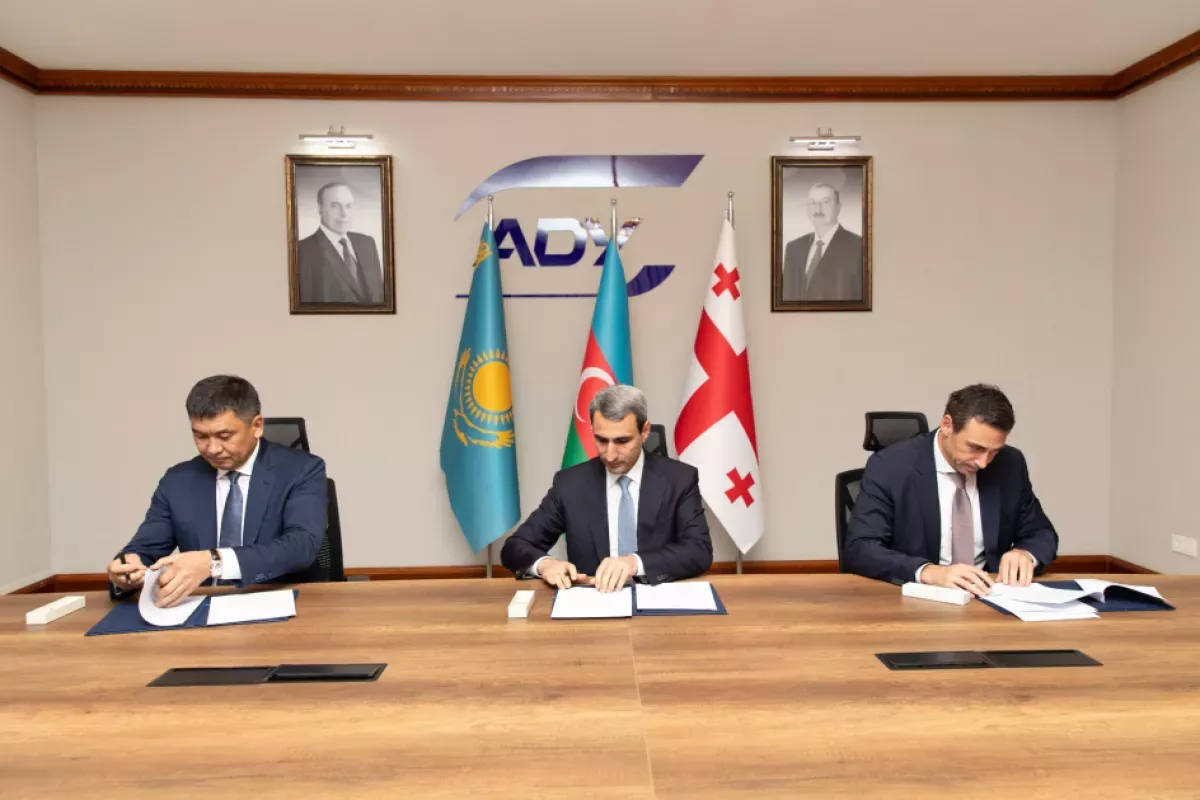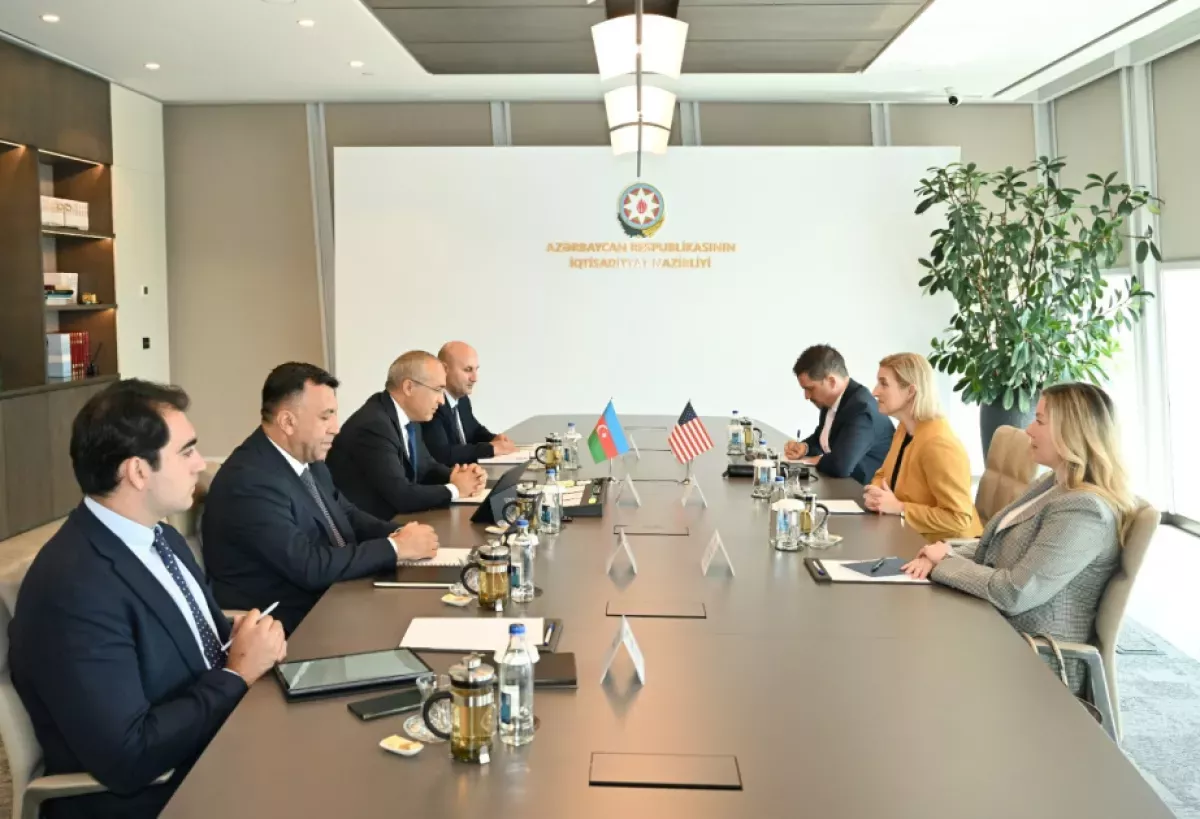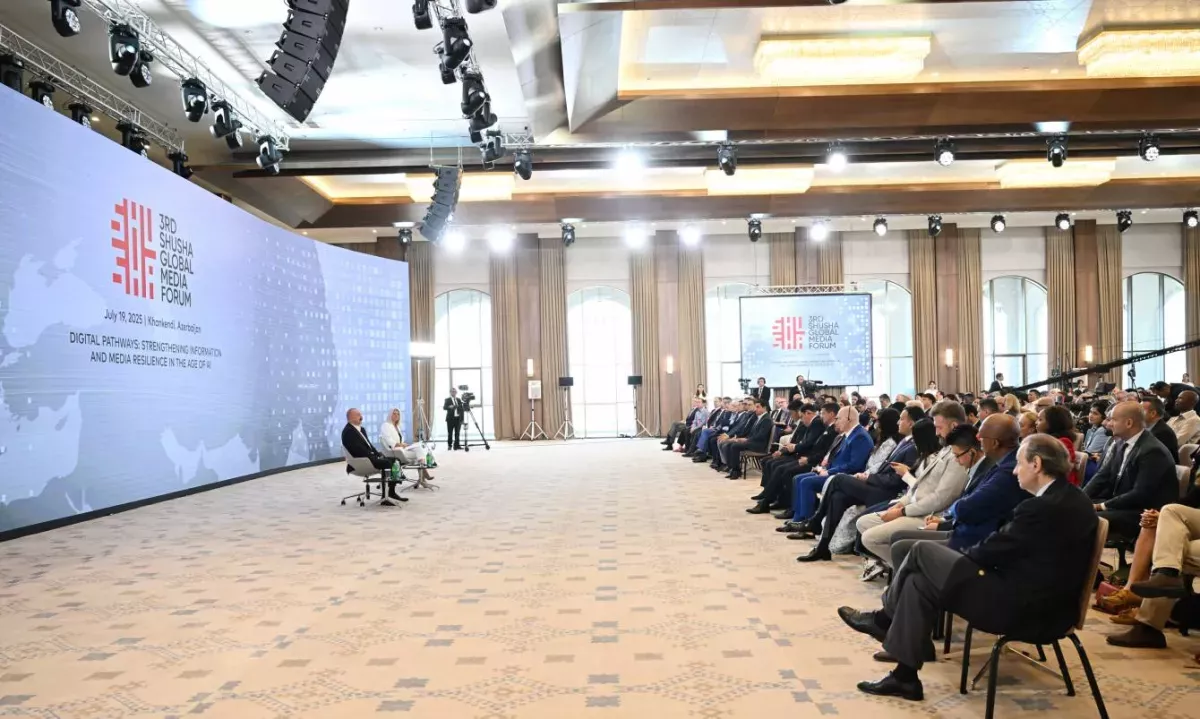Middle Corridor: Key to a new geopolitical architecture And Eurasian connectivity
At the end of the first ten days of August, during a trilateral meeting held in Baku between the heads of the railway authorities of Azerbaijan, Georgia, and Kazakhstan, alongside reviewing the results of the seven-month activities of the joint venture Middle Corridor Multimodal Ltd (MCM) — established to facilitate effective cooperation among the railway administrations of these countries for the development of the Middle Corridor — a protocol was signed to include the Chinese company China Railway Container Transport Corp. Ltd. (CRCT) in the enterprise. In this regard, the meeting participants emphasised that Beijing’s involvement will create new opportunities for organising container shipments from China to Europe, contributing to continuous, reliable, and efficient freight transportation along the Middle Corridor.

In this context, the information about the U.S. Department of Commerce’s plans to send a representative delegation directly to Kazakhstan, Azerbaijan, and Georgia — the countries involved in the Middle Corridor — to analyse the route’s prospects in terms of logistics, infrastructure, and trade is particularly telling.
It is no coincidence that during recent talks between Azerbaijan’s Minister of Economy Mikayil Jabbarov and the U.S. Chargé d’Affaires in our country, Amy Carlon, the parties shared views on the prospects of the Middle Corridor while discussing the expansion of economic cooperation between the states.

The U.S. and the EU view the development of the Middle Corridor as a crucial element in reducing dependence on traditional routes through Russia. Meanwhile, China aims to utilise this route as an alternative transit path amid the ongoing war in Ukraine, as well as within the framework of the “Belt and Road” initiative.
In numerical terms, if the volume of freight transported along this corridor increased by more than 62% in 2024, reaching 4.5 million tons, this year it is projected to grow to 5.2 million tons, of which 4.2 million tons will pass through the countries participating in the route.
The relevance of the successful operation of this route was highlighted, in particular, during a recent phone conversation between Azerbaijani President Ilham Aliyev and Kazakh President Kassym-Jomart Tokayev following the Armenia-Azerbaijan talks in Washington. President Aliyev emphasised that the agreements reached on unhindered transportation between the main part of Azerbaijan and Nakhchivan Autonomous Republic will contribute to new trends in the cargo handling capabilities of the Middle Corridor.

The Trans-Caspian International Transport Route (TITR), also known as the Middle Corridor, was also discussed during the recently concluded third United Nations Conference on Landlocked Developing Countries (LLDC3) held a few days ago in Avaza, Turkmenistan.
As noted by Türkiye’s Minister of Transport and Infrastructure, Abdulkadir Uraloğlu, the active use of the Middle Corridor as a fast and secure route will contribute to the sustainable development of landlocked countries. In this context, Türkiye—situated at the crossroads of Europe, Asia, and Africa—is seen as a key link in the development of multimodal transport routes, enabling Ankara to position itself as a strategic hub that unites international logistics lines.
In turn, an analytical report by Uzbekistan’s Ministry of Transport, presented within the framework of the project “Development of Alternative International Transport Corridors and the Middle Corridor under Conditions of Geopolitical Instability,” identifies the TITR as one of the alternative routes for Kyrgyzstan, Tajikistan, and Uzbekistan. The report notes that it can help diversify import and export flows with the EU, the U.S., Canada, and others, while also providing access to the growing markets of the Asia-Pacific region, India, and other countries.
The report emphasises that the development of full-fledged transit transport corridors through the countries of the region creates a demand among partner countries for the “logistics product” of Central Asian states (i.e., cargo transit through the Central Asia region). In this scenario, the region, by increasing its significance in the export of transport services, gains the opportunity to reduce the operating costs of its own infrastructure as well as that of partner countries through higher transit volumes and increased export of transport services. By integrating their transport systems into the cross-cutting diametrical transit corridors of Eurasia, Central Asian countries can transform into a major transport and logistics hub.
The report summarised that in today’s turbulent world, the implementation of large transport and communication projects often faces the predominance of political motives—driven by the interests of individual countries or blocs—over economic considerations. Therefore, states planning to actively participate in such initiatives need to carefully analyze the anticipated risks and opportunities.
Therefore, “in assessing the potential of the Middle Corridor, it is important to adopt an approach that takes into account the interests of the countries within the region.” In this context, to minimise geopolitical risks, coordinating the transport policies of Central Asian states becomes crucial “to maximise the benefits from emerging opportunities.”

The Middle Corridor plays a significant role in global geopolitics. In this context, particular attention is drawn to President Ilham Aliyev’s remarks at the III Shusha Global Media Forum, where he emphasised the interconnected nature of the Middle Corridor, “which today unites a broad geography of countries.” The President highlighted that this route stretches from the East to Western Europe, fostering greater mutual understanding among various actors and regions.
Further commentary on this point appears almost superfluous.








